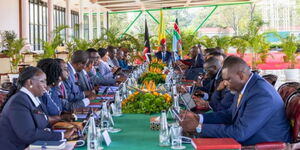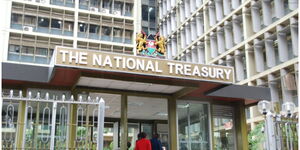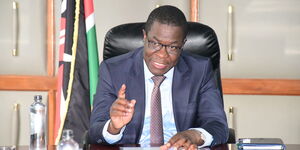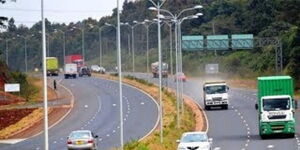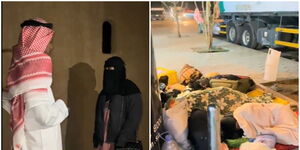For the past three years that the Kenya Kwanza administration has been in office, many Kenyans have always wondered why President William Ruto and his Cabinet often skip the traditional boardrooms at State House, Nairobi, preferring spaces just outside his official podium.
While some have been guessing that maybe the setting was for the Cabinet to get some fresh air. Others thought it was purely symbolic. However, on Wednesday, at the Taxpayers’ Dinner, Ruto finally let the cat out of the bag on why he shifted the meetings from the boardrooms to an open space.
Ruto, while inviting attendees to dinner, explained that the shift was driven by Treasury budget cuts to State House allocations, prompting the seat of power to find innovative ways to use public funds more prudently.
He also noted that the tents used to host state events during the Jubilee administration were costly to maintain, placing a heavier burden on taxpayers.
This led him to request Parliament to allocate funds for the modernisation of the space, part of the broader structural changes the government has been undertaking at the House on the Hill.
"As part of being prudent in managing resources, this is my office; you are going to have dinner in my office. So during the day, my boardroom is usually around this place. This is where I do Cabinet, and it is because the resources or use of my office were reduced by CS Mbadi and his team," Ruto said, eliciting laughter from the audience.
Adding that: "It is our biggest moment because we have innovated how to use this room. I want to commend Parliament because when I requested them to facilitate the construction of this facility, it was because we were having tents here that were 2 to 3 times more expensive than this building. We have recovered the resources that were used in those tents by building this building in just one year."
Since taking office, President Ruto has shown keen interest in giving the State House a facelift, a building that largely retained the original architectural design inherited from the British.
Earlier this year, Ruto announced plans to construct a church within the State House premises at an estimated cost of Ksh1 billion, sparking backlash from Kenyans. The church was designed to accommodate 8,000 people and was to feature tall stained-glass windows and crosses, giving it a grand and modern appearance.
Reports indicated that the church was intended for multiple purposes, including national prayer services, diplomatic events, and interfaith ceremonies.
However, the High Court temporarily halted Ruto’s plan to build the church, with Justice Chacha Mwita ordering a suspension of construction pending the hearing and determination of the case.
In January, the government also announced plans to construct 130 houses for General Service Unit (GSU) officers within the State House grounds in Nairobi County.
The ongoing renovations at the State House faced resistance from heritage and architectural bodies. The Architectural Association of Kenya (AAK) strongly opposed the changes, arguing that the new renovations compromise the building’s historical and architectural significance.
AAK expressed concern that the facelift and new constructions undermine the integrity of one of Kenya’s most iconic heritage sites, emphasising the need to balance modernisation with preservation.
State House was built in 1907 and designed by the British architect Sir Herbert Baker, and was originally called Government House and served as the official residence of the colonial Governor of Kenya. After independence in 1963, it became the official residence of the President of Kenya.

